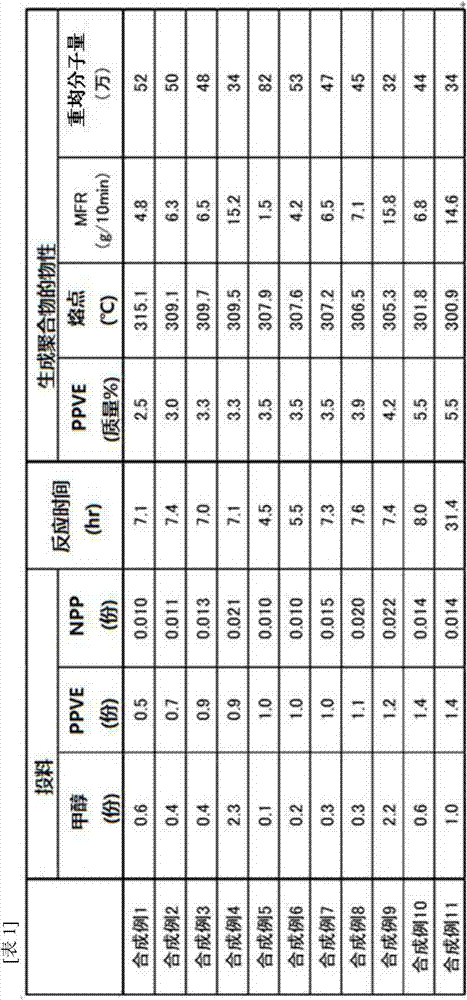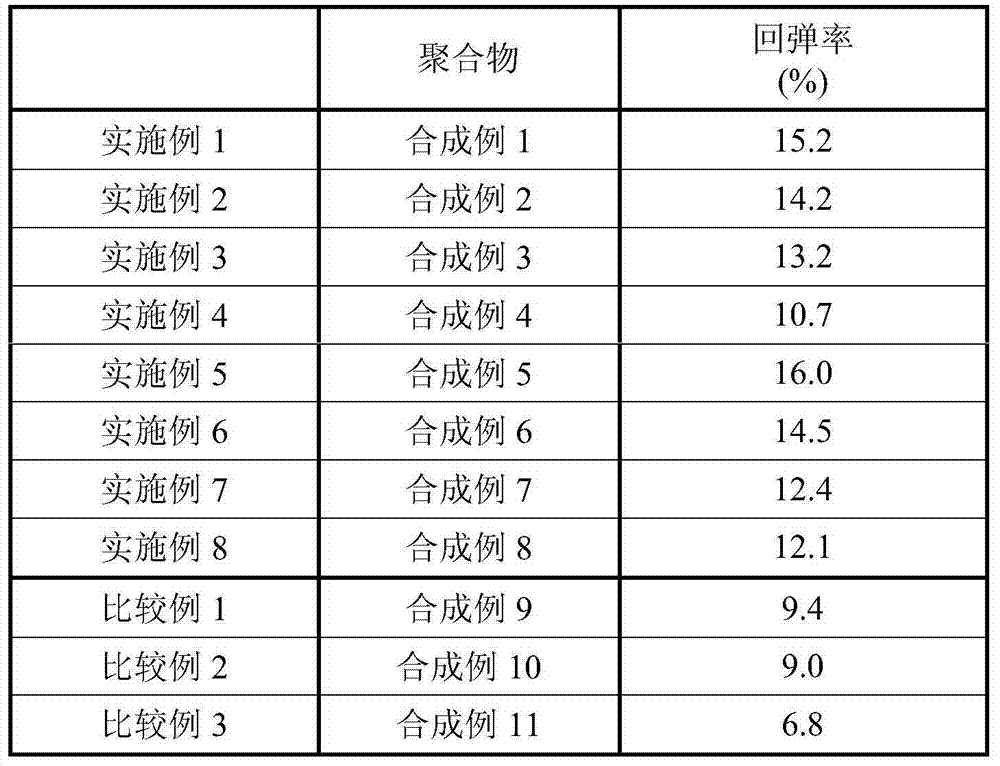Sealing material
A sealing material and polymer technology, applied in structural parts, battery pack parts, lithium batteries, etc., can solve the problems of easy creep and unsuitable use.
- Summary
- Abstract
- Description
- Claims
- Application Information
AI Technical Summary
Problems solved by technology
Method used
Image
Examples
Synthetic example 1
[0097] 26.6 parts of decarbonated and demineralized water was put into a jacketed autoclave equipped with a stirrer and capable of holding 174 parts of water. The space inside the autoclave was sufficiently replaced with pure nitrogen gas and evacuated, and 30.4 parts of perfluorocyclobutane (hereinafter referred to as "C-318"), 0.6 parts of methanol as a chain transfer agent, and 0.5 parts of PPVE were introduced. Next, while stirring, the inside of the autoclave was maintained at 35°C, and TFE was press-fitted so that the internal pressure was 0.58 MPaG. 0.010 part of di-n-propyl peroxydicarbonate (hereinafter referred to as "NPP") as a polymerization initiator was added to initiate polymerization. As the polymerization progressed, the pressure in the autoclave dropped, so TFE was pressed in to maintain the internal pressure at 0.58 MPaG. In addition, PPVE was added appropriately to make the polymerization composition uniform.
[0098] After 7.1 hours from the start of the po...
Synthetic example 2~11
[0106] Except that the amount of reactants and the reaction time were changed as shown in Table 1, pellets of the polymer product were produced in the same manner as in Synthesis Example 1.
[0107] For the obtained particles, the copolymer composition (PPVE ratio), melting point, MFR and weight average molecular weight were measured. The results are shown in Table 1.
[0108]
Embodiment 1
[0110] The pellets of the polymer product obtained in Synthesis Example 1 were preheated at 350°C for 1 hour, then pressed at 1 MPaG for 1 minute to form a sheet with a thickness of 20 mm, and cooled to room temperature naturally to obtain a sample sheet.
[0111] Cutting the above sample pieces into Use this as a test piece.
[0112] The resilience rate of the above test piece was measured according to the above method. The results are shown in Table 2.
PUM
| Property | Measurement | Unit |
|---|---|---|
| Melting point | aaaaa | aaaaa |
Abstract
Description
Claims
Application Information
 Login to View More
Login to View More - R&D
- Intellectual Property
- Life Sciences
- Materials
- Tech Scout
- Unparalleled Data Quality
- Higher Quality Content
- 60% Fewer Hallucinations
Browse by: Latest US Patents, China's latest patents, Technical Efficacy Thesaurus, Application Domain, Technology Topic, Popular Technical Reports.
© 2025 PatSnap. All rights reserved.Legal|Privacy policy|Modern Slavery Act Transparency Statement|Sitemap|About US| Contact US: help@patsnap.com


